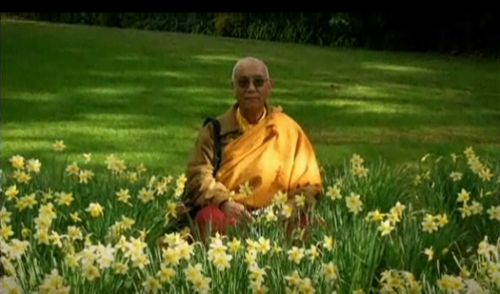
I recently came across this report on tvnz.co.nz about the death of Thupten Rinpoche, a highly regarded lama of the Dhargyey Buddhist Centre in New Zealand. Rinpoche died on the 24th of May and was cremated on June 13th. During the 20 days between his death and cremation, Rinpoche showed no signs of decay—no decomposition, rigor mortis, hair loss, or odor—a phenomena that the report states cannot be explained by science. However, Rinpoche’s students explained this occurrence quite simply, that he was in a state of death meditation known as Thuktam, in which one’s consciousness remains in the body despite its physical death. As I understand it, Thukdam is a state that is reached by certain people who have mastered advanced Vajrayana practices in which one learns to control the movement of mind throughout the body. While I’ve heard many stories like this before, it is interesting to see one covered by a News organization.
Personally, while the report is undoubtedly interesting, my thought is that such things should not be viewed just because they seem fantastical, thus turning them into a sort of spectacle. I prefer to see this story as motivational, a reminder to continue working with my own mind. Whether one believes in a state like Thukdam or not, it doesn’t matter. The point is to practice, to generate wisdom and compassion, to liberate oneself from suffering, and to help people. As Peter Small, a student of Thupten Rinpoche explains of his teacher,
“The essence of his practices was devotion to others and care of others.”
Watch the report here.
Thank you for subscribing to Tricycle! As a nonprofit, we depend on readers like you to keep Buddhist teachings and practices widely available.